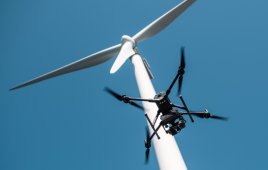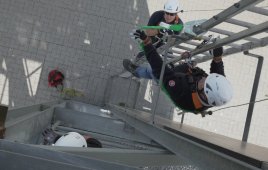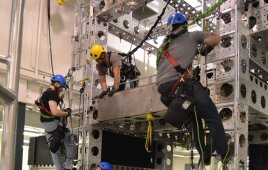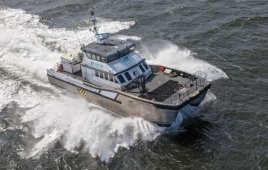When considering safety concerns with wind turbines, two main topics come to the top—technician safety and turbine safety. Technician safety prevention typically revolves around protective clothing, climb-assist technologies, and best practices in the field.
Technician Safety
Increasingly, companies are using rope-access techniques to perform work on wind turbines. Rope access technicians are highly-trained individuals providing safe and efficient turbine cleaning, inspections, and blade repairs. The use of heavy cranes and lifts are costly and can often increase turbine down-time due to transportation and set-up limitations. Blade inspections, light blade repairs, and tower cleaning and servicing can be performed more efficiently by a team of qualified rope-access technicians. As this trend continues, suppliers are providing less-expensive and safer products.
Turbine Safety
While worker safety is the number one concern for turbine operators, it’s also important to keep in mind the safety of the turbine. Turbines typically stand 60m to 80m and are more than likely the highest object for miles. As such, wind turbines are extremely susceptible to lightning strikes. In fact, most turbines will experience multiple lightning strikes during their operating life. When lightning surges through a wind turbines electrical system it can cause severe damage to equipment such as control electronics, power converters and power transformers. Approximately 50% of all electrical failures in a wind turbine are caused by these strikes. Current grounding solutions have been somewhat successful, but as you can see by the high number of electrical failures caused by lightning, innovations are still needed.
WPE
Filed Under: Safety




